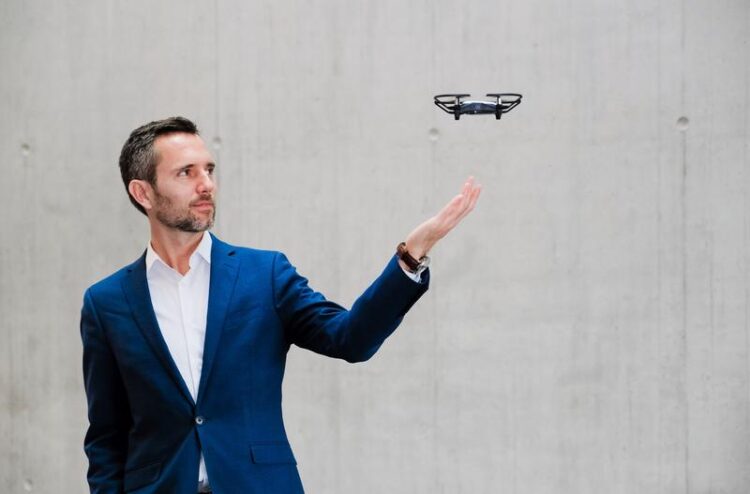On the way to lifelike robots

Robotik-Forscher Mirko Kovac will Maschinen mit der Intelligenz des Lebens verschmelzen.
Robert Stürmer / Empa
In order for robots to be able to achieve more than simple automated machines in the future, they must not only have their own “brain”. Empa researchers postulate that artificial intelligence must be expanded to include the capabilities of a Physical Artificial Intelligence, PAI. This will redefine the field of robotics and the relationship between man and machine.
Artificial intelligence is supposed to make machines perform at ever more amazing levels. A robot that can do little more than a remote-controlled model car has a limited range of applications. But from an automatic machine to an autonomous robot, it is a big, almost revolutionary step. Robotics researchers Mirko Kovac and Aslan Miriyev, who both work at Empa’s “Materials and Technology Center of Robotics” in Dübendorf and at the “Aerial Robotics Lab” of Imperial College London, are convinced that one decisive component can make this evolutionary step possible:
Physical artificial intelligence, PAI for short. Only when the artificial intelligence of a digital “brain” is merged with an intelligent body could new types of robots be created that have properties comparable to those of intelligent living organisms. They have now published their concept in the latest issue of the renowned scientific journal Nature Machine Intelligence.
Thinking outside the box
In order to develop fully autonomous, intelligent robot systems, researchers must recognize and utilize the synergies of different disciplines, such as materials science, biology, mechanical engineering, chemistry and computer science, according to the Empa scientists. “We imagine that PAI robots will only become reality through the use of a variety of unconventional materials and by combining research methods from various disciplines,” says Mirko Kovac. To do this, researchers would need a much broader range of skills than is usually seen in conventional robotics. Interdisciplinary cooperation, partnerships and an adaptation of the curriculum for young researchers are therefore called for. “Working in a multidisciplinary environment requires courage and constant learning. Researchers must leave their comfort zones and think beyond the boundaries of their own field“.
Symbiosis of man and machine
The Empa researchers want to promote the vision of a society in which people are “living” together seamlessly with machines. “This symbiosis can only be achieved if safe interaction is possible and if the machines have true, Physical AI, allowing them to live like benevolent animals together with nature and people,” says Kovac. The researchers now hope that their work will encourage active discussion of the topic.
Wissenschaftliche Ansprechpartner:
Prof. Dr. Mirko Kovac (Empa)
Materials and Technology Centre of Robotics
Phone: +41 58 765 4689
aslan.miriyev@empa.ch
Aerial Robotics Lab (Imperial)
Phone: +44 20 7594 5063
m.kovac@imperial.ac.uk
Dr. Aslan Miriyev
Materials and Technology Centre of Robotics
Phone: +41 58 765 4631
Originalpublikation:
A Miriyev, M Kovac ; Skills for Physical Artificial Intelligence; Nature Machine Intelligence (2020); https://rdcu.be/cavWu
Weitere Informationen:
Media Contact
All latest news from the category: Information Technology
Here you can find a summary of innovations in the fields of information and data processing and up-to-date developments on IT equipment and hardware.
This area covers topics such as IT services, IT architectures, IT management and telecommunications.
Newest articles

NASA: Mystery of life’s handedness deepens
The mystery of why life uses molecules with specific orientations has deepened with a NASA-funded discovery that RNA — a key molecule thought to have potentially held the instructions for…

What are the effects of historic lithium mining on water quality?
Study reveals low levels of common contaminants but high levels of other elements in waters associated with an abandoned lithium mine. Lithium ore and mining waste from a historic lithium…

Quantum-inspired design boosts efficiency of heat-to-electricity conversion
Rice engineers take unconventional route to improving thermophotovoltaic systems. Researchers at Rice University have found a new way to improve a key element of thermophotovoltaic (TPV) systems, which convert heat…



